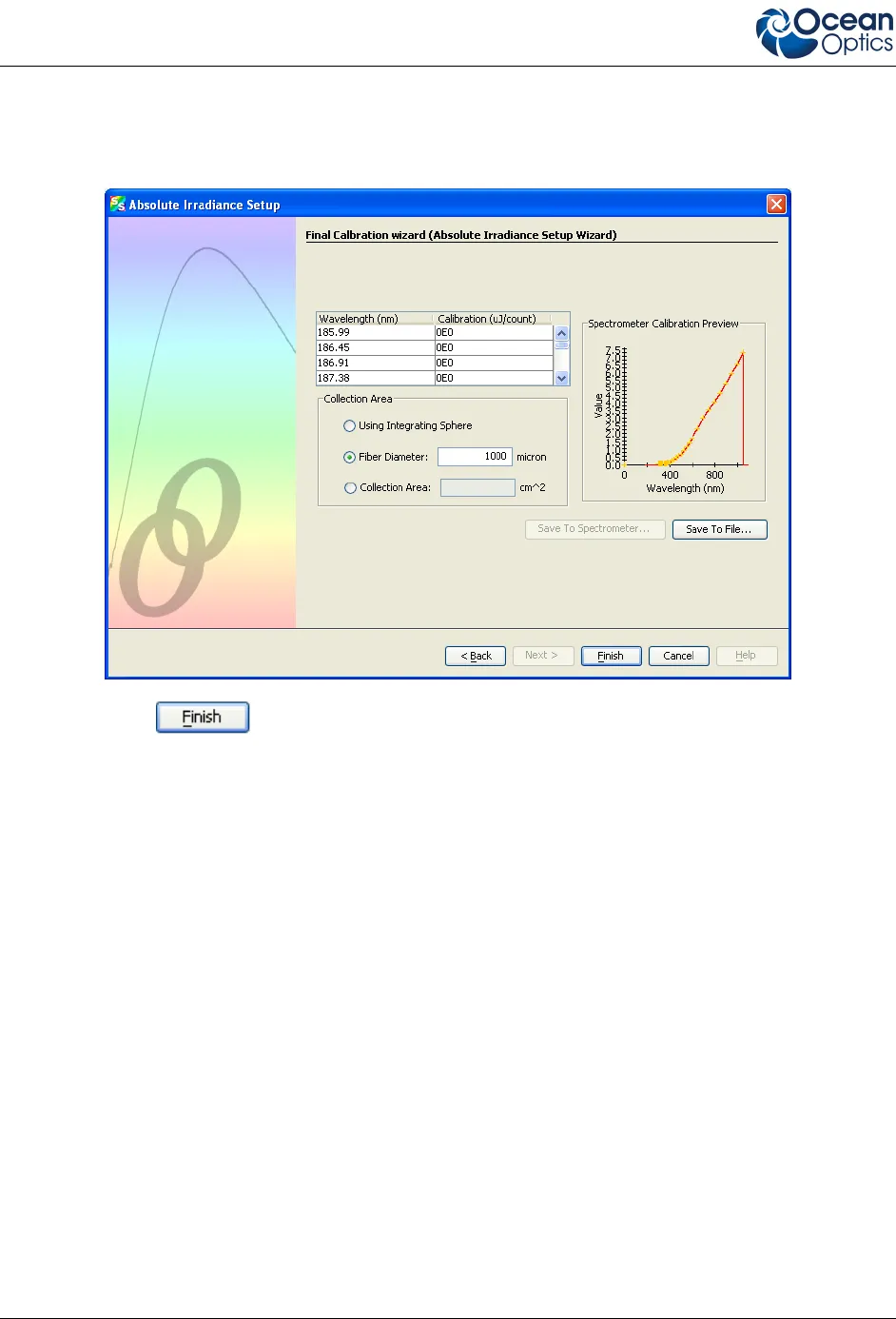
A: Experiment Tutorials
164 000-20000-300-02- 201110
e. Enter the name of the lamp file or browse to the desired file to use. The final screen of the
calibration wizard appears. Note in the
Spectrometer Calibration Preview that the lamp file
curve (in yellow) is overlaid on the spectrometer’s curve (red). Once you apply this
calibration, the curves should be exactly the same.
f. Click . The Absolute Irradiance Calibration measurement screen appears.
Relative Irradiance
Relative irradiance is a measurement of light relative to the known color temperature of a blackbody light
source. Common applications include characterizing the light output of LEDs, incandescent lamps, and
other radiant energy sources such as sunlight. Relative irradiance measurements also include fluorescence
measurements, which measure the energy given off by materials excited by light at shorter wavelengths.
Relative Irradiance uses a lamp with a known color temperature (but not necessarily known power output)
to correct just the shape of the spectrum but not the magnitude (hence its "relative" identifier). Relative
Irradiance allows the user to determine whether there is more light at one wavelength than another (which
cannot be determined from Scope mode due to the IRF), though it does not provide any information on
how much power there is in absolute terms. This can be useful in some applications, such as measuring
fluorescence. You must have stored reference and dark spectra before measuring relative irradiance.
Calculate relative irradiance as follows:
I
L,T
= N * B
L,T
* (S
L
- D
L
) / (R
L
- D
L
)










